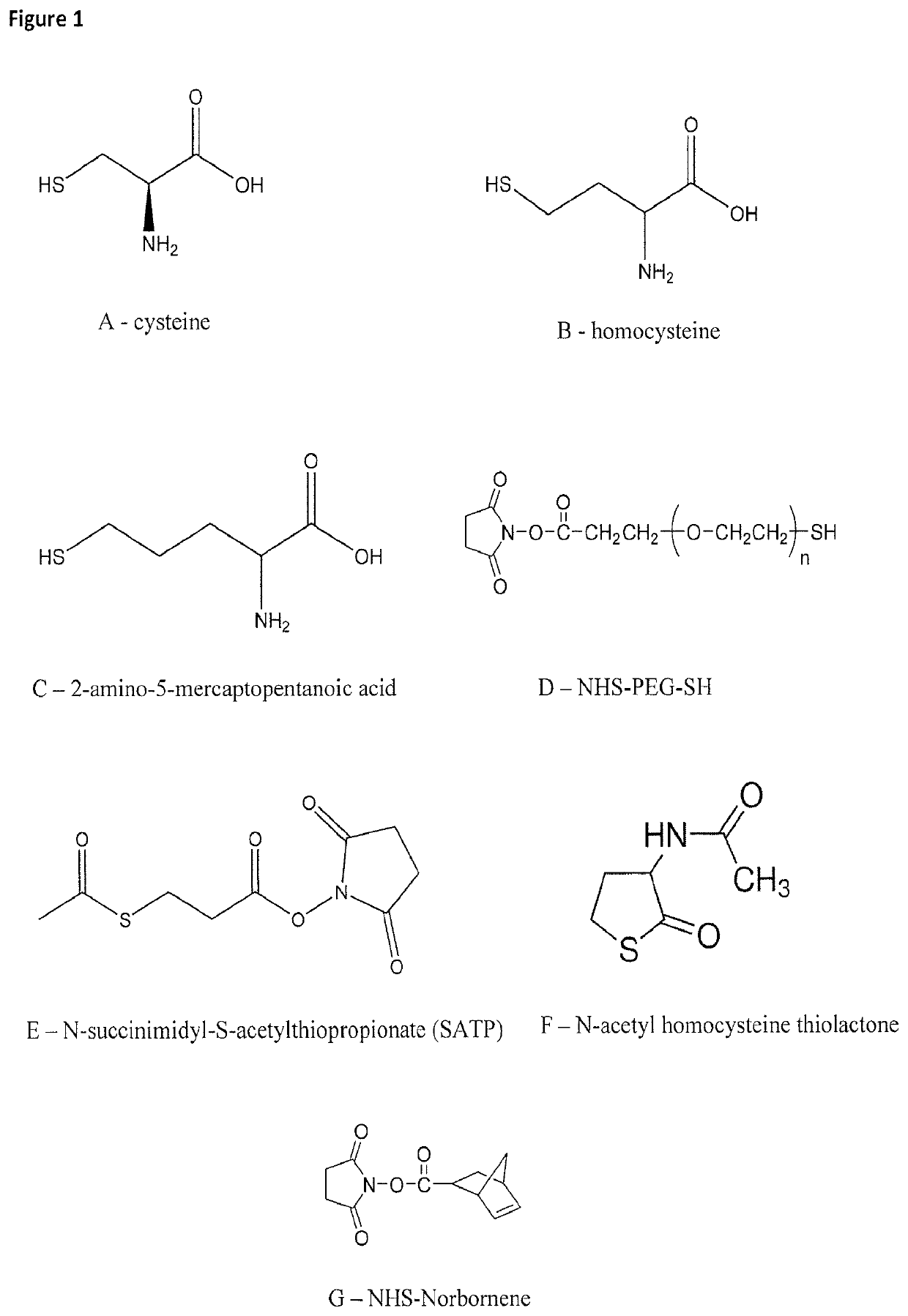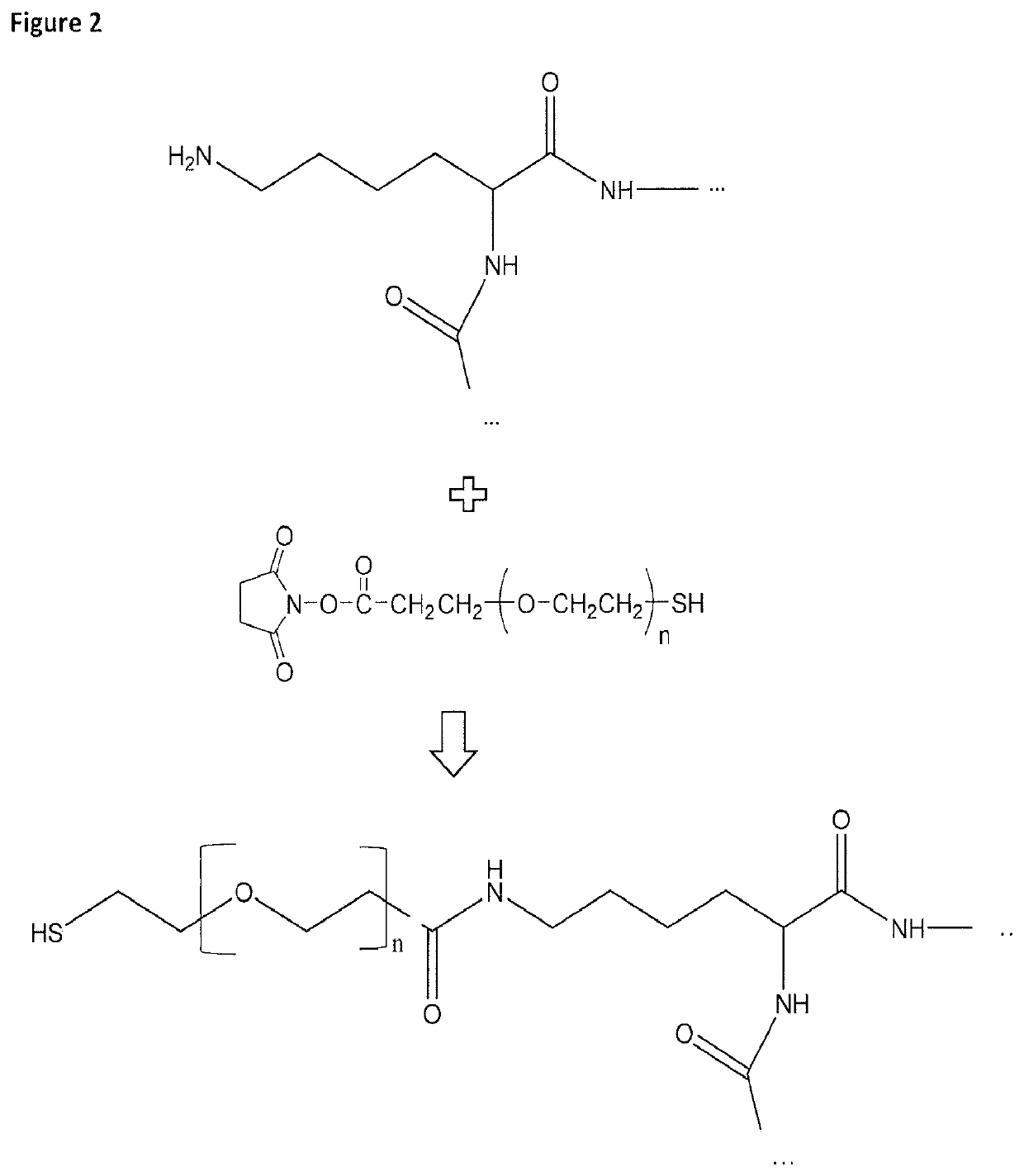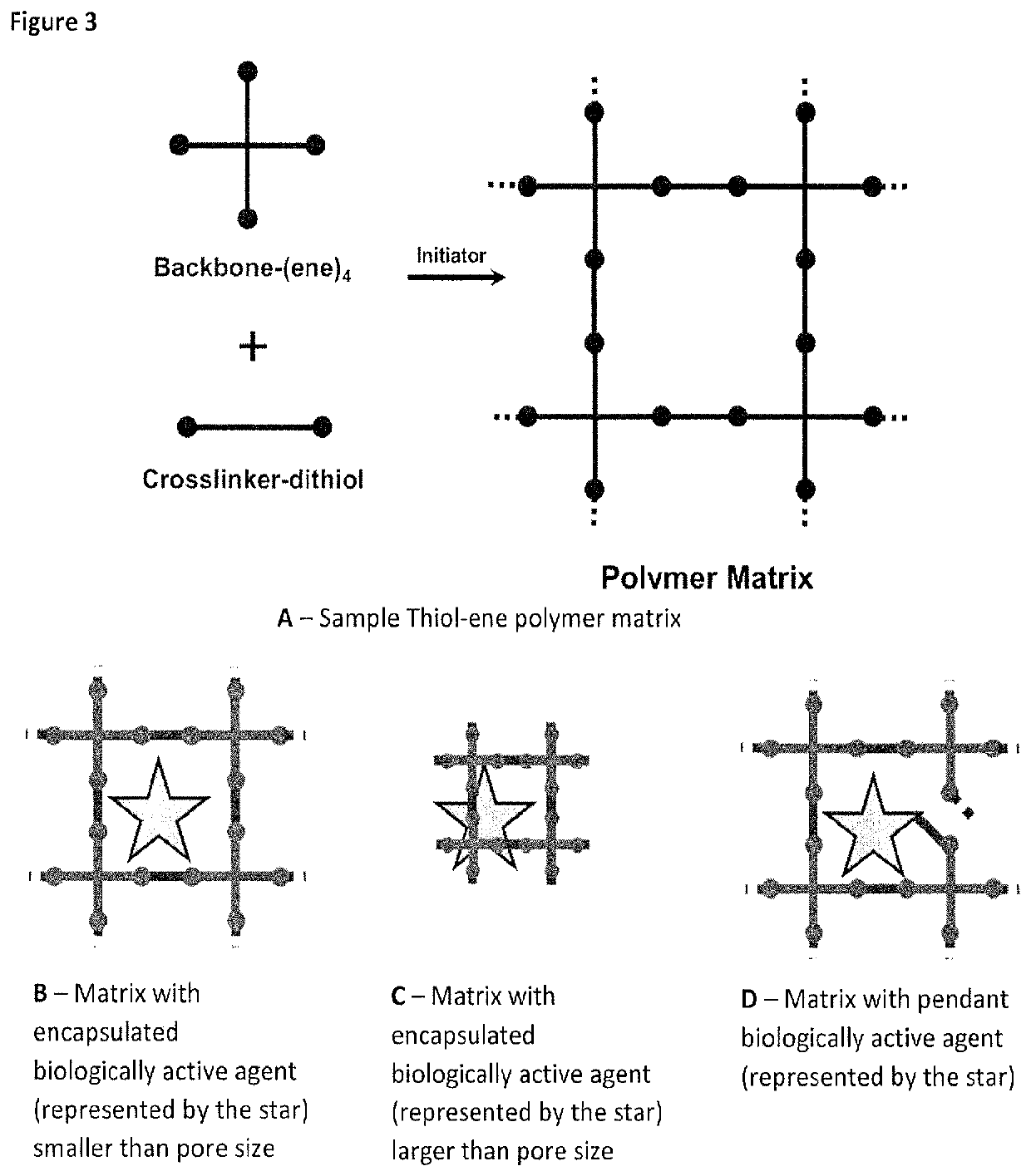Degradable thiol-ene polymers and methods of making thereof
a technology of thiol-ene and polymer, which is applied in the direction of peptides, prosthesis, aerosol delivery, etc., can solve the problems of significant limitations of the chemistries used to create these biomaterials, and achieve the effect of promoting radical-mediated thiol-ene or thiol-yne reactions and high activity
- Summary
- Abstract
- Description
- Claims
- Application Information
AI Technical Summary
Benefits of technology
Problems solved by technology
Method used
Image
Examples
example 1
Incorporation of Homocysteine and 2-amino-5-sulfanyl Pentanoic Acid Into Synthetic Oligopeptides Upon Solid-Phase Synthesis
[0397]Cysteine-containing oligopeptides of the sequences KCGPQGIAGQCK (“MMPA”) (SEQ ID NO: 1) and CALKVLKGC (“C2xPC”) (SEQ ID NO: 2) were synthesized by solid-phase Fmoc synthesis procedure on rink-amide resin according to the methods well established in the art (see Chan W. C. and White P. D. 2000).
[0398]To site-specifically incorporate homocysteine or 2-amino-5-sulfanyl pentanoic acid residues in place of the cysteine in these sequences, the Fmoc-protected building blocks (S)-2-(Fmoc-amino)-4-tritylsulfanyl-butyric acid (Bachem) or (S)-Fmoc-2-amino-5-(tritylthio)-pentanoic acid (PolyPeptide) were used in the synthetic procedure instead of the common building blocks for cysteine (e.g. Fmoc-L-Cys(Trt)-OH). The synthesized oligopeptides are cleaved from the resin, deprotected and purified using standard methods known in the art.
example 2
Incorporation of Non-Natural Thiols Into Synthetic Oligopeptide
[0399]Procedure 1: On-Resin Selective Thiolation of Peptides with NHS-PEG-thiol
[0400]To create a dithiol peptide crosslinker without the incorporation of two cysteine amino acids, the following peptide was synthesized at a 0.5 mmol scale with standard Fmoc chemistries on an automated Solid-Phase Peptide Synthesizer (Tribute, Protein Technologies): GPQ(trt)GIWGQ(trt)GK(Dde)G-resin (SEQ ID NO: 3). A final deprotection step was included to remove the N-terminal Fmoc from the peptide, leaving a free terminal amine: NH2-GPQ(trt)GIWGQ(trt)GK(Dde)G-resin (SEQ ID NO: 3). The Dde protective group on K(Dde) was then removed by incubating the peptide-resin in 20 ml DMF+2% hydrazine for 10 minutes at room temperature (this deprotection step was repeated 3 times) to create NH2-GPQ(trt)GIWGQ(trt)GK(NH2)G-resin (SEQ ID NO: 4). The peptide-resin was then washed with DMF to remove hydrazine and weighed (5.5 g of the peptide-resin was rec...
example 3
Incorporation of Non-Cysteine Thiol Groups Into Collagen
[0407]Rat tail collagen dissolved at ˜3 mg / mL concentration in 20 mM acetic acid (Corning) is dialyzed against solution of 6 M urea in phosphate buffer at pH 8.0 overnight at +4° C. The dialyzed denatured collagen is subsequently treated with 1:100 (vol:vol) of 55 mM solution of N-succinimidyl-S-acetylthiopropionate (SATP) in dimethylsulfoxide for 2 hours at ambient temperature. Unreacted SATP and dimethylsulfoxide are removed by overnight dialysis at +4° C. against 6 M urea in phosphate buffer, pH 7.4. The thiol groups attached to the denatured collagen are deacetylated by treating the protein solution with 1:10 (vol:vol) of 0.5 M hydroxylamine, 25 mM EDTA in phosphate buffer pH 7.4 for 2 hours at ambient temperature and the urea, buffer and low-molecular weight products of deacylation step are removed by extensive dialysis against 20 mM acetic acid at +4° C.
PUM
| Property | Measurement | Unit |
|---|---|---|
| wavelength | aaaaa | aaaaa |
| wavelength | aaaaa | aaaaa |
| wavelength | aaaaa | aaaaa |
Abstract
Description
Claims
Application Information
 Login to View More
Login to View More - R&D
- Intellectual Property
- Life Sciences
- Materials
- Tech Scout
- Unparalleled Data Quality
- Higher Quality Content
- 60% Fewer Hallucinations
Browse by: Latest US Patents, China's latest patents, Technical Efficacy Thesaurus, Application Domain, Technology Topic, Popular Technical Reports.
© 2025 PatSnap. All rights reserved.Legal|Privacy policy|Modern Slavery Act Transparency Statement|Sitemap|About US| Contact US: help@patsnap.com



